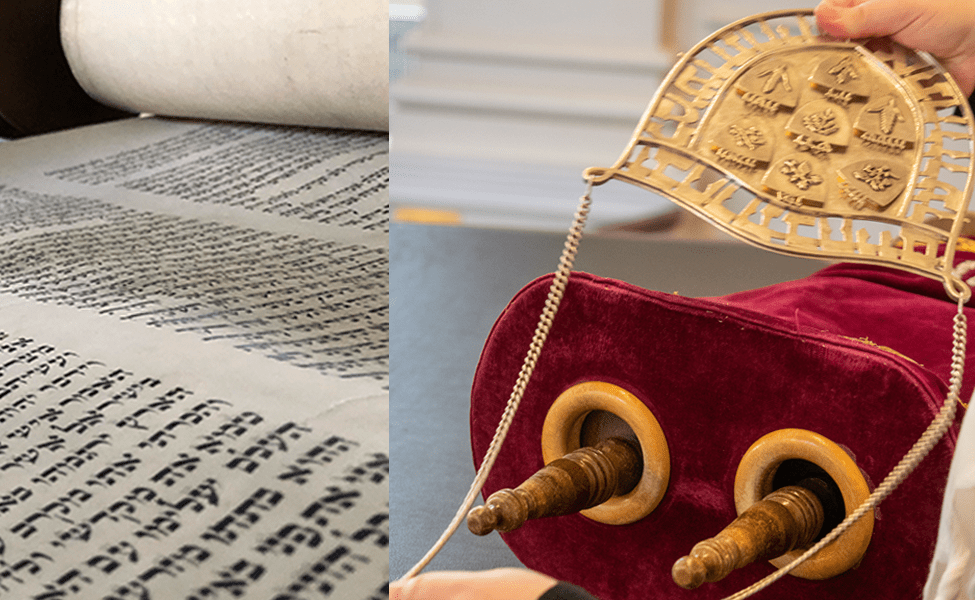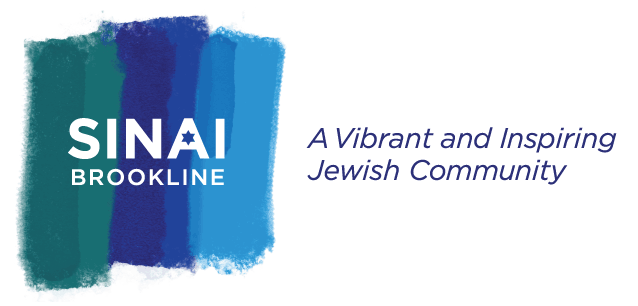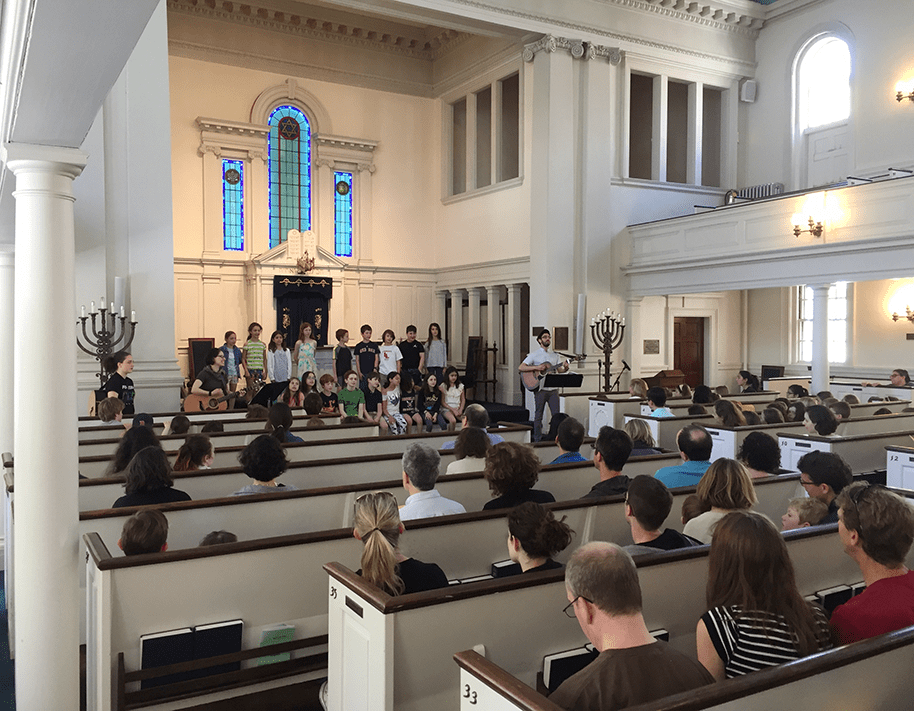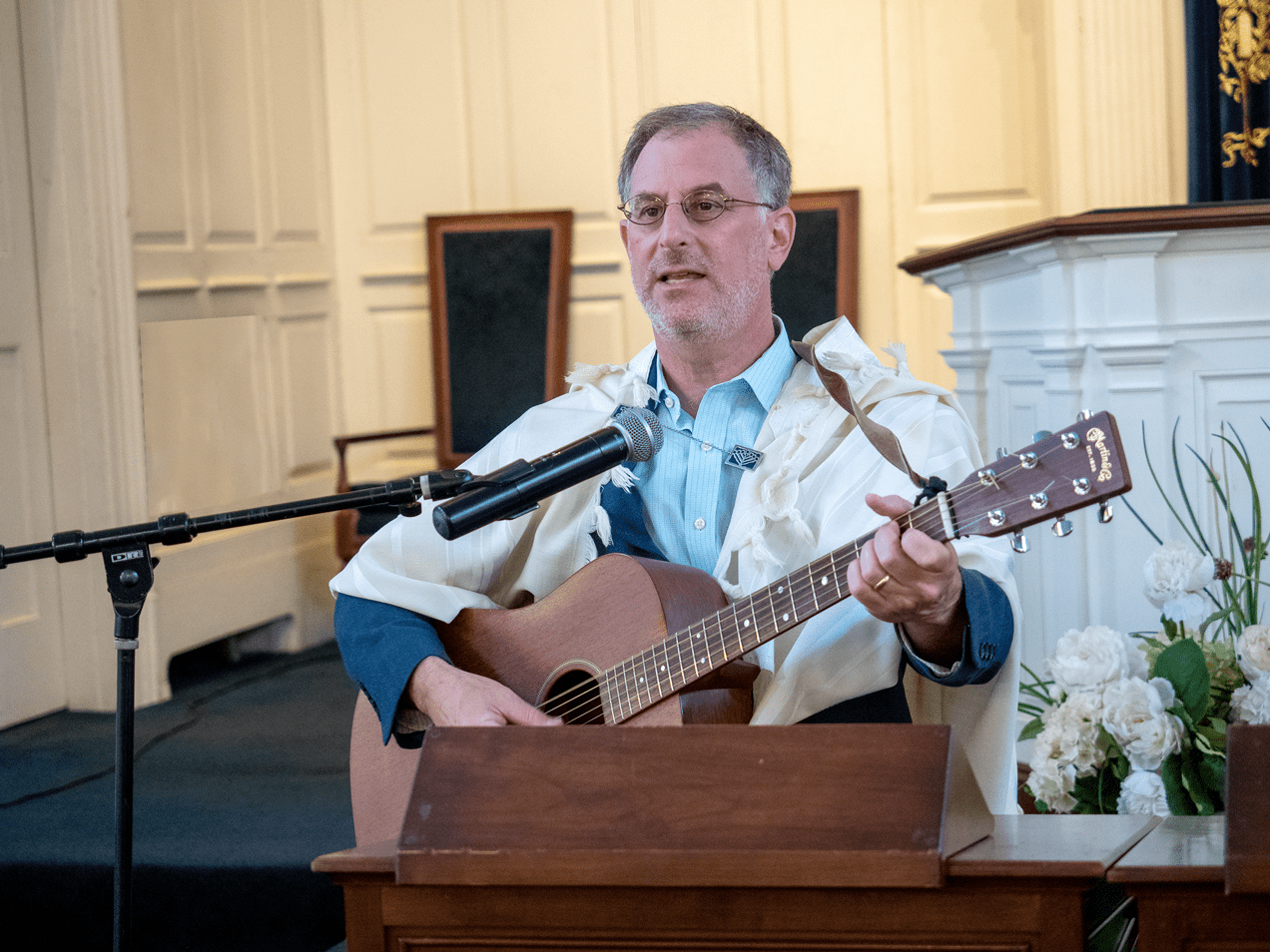Prayer and Spirituality

Seeking holiness in community through Jewish ritual and prayer
Worship at Temple Sinai provides a welcoming, warm, & inclusive environment in which to sing, pray and meditate. Our religious services reflect a blend of traditional and liberal expressions of Jewish thought and ritual emphasizing both the importance of Hebrew language and the beauty of Jewish music.
Temple Sinai is a spiritual home where Jewish ritual and prayer bring us experiences of holiness and meaningful relationship with God, in whatever way we may understand or wrestle with our conceptions of God.
Our creative and evocative observances of Mitzvot (commandments) such as Tefillah (prayer), Shabbat, and Chagim (holidays), and other sacred rituals, lead each of us to a higher sense of self and community.
In the spirit of Reform Judaism, we are open to re-examining, renewing, and re-interpreting ancient and modern Jewish rituals, and our congregation encourages explorations of personal spirituality and Jewish spiritual growth.
Services at Sinai -what to expect
Our religious services reflect a blend of traditional and liberal expressions of Jewish thought and ritual. They emphasize both the importance of the Hebrew language and the beauty of traditional Jewish music. The order of the service includes a number of prayers and meditations that praise God, acknowledge the wonder of life, and thank God for the many blessings we receive. There is time for silent prayer as well as responsive readings. Many services include a D’var Torah or a discussion of a contemporary issue. Our service generally includes the following components:
What to expect at Sinai Services
Kabbalat Shabbat
On Friday evenings, we enter into Shabbat by lighting Shabbat candles and welcoming the presence of Shabbat with singing, adapting the 16th-century practice of preparing to greet Shabbat with music and meditation, an opportunity to experience the blessing, rest and peace that Shabbat can bring. We sing selected verses of the L’cha Dodi song, symbolically welcoming Shabbat by facing the entrance of our Sanctuary to greet Shabbat. We encourage the congregation to greet one another and introduce themselves to one other as a community.
The Bar’chu
We call one another to prayer: After initial readings and/or songs, the evening or morning services proper begin with the Bar’chu, a call to worship that dates back to the time of the Temple in Jerusalem. Our practice is to face the Ark for this opening call to prayer.
The Sh’ma and its blessings
This section expresses three major themes: creation, revelation, and redemption. The Sh’ma, the watchword or motto of the Jewish people, declares our belief not only in the unity of God but also in the unity of all humanity.
The Amidah
The Amidah is the central prayer of the liturgy. In a weekday service, this would include a series of petitions to God, but on Shabbat, we content ourselves with prayers of praise and thanksgiving. We usually chant the first section of the Amidah, including a meditation that God open our lips and our hearts and prayer, and continuing with the first prayer, the Avot v’Imahot, reminding ourselves of our ancestors’ spiritual paths. We provide an opportunity for the entire congregation to pray silently, using the words of prayerbook or their own personal meditations, and to be seated as they are ready.
Learning
Jewish learning is a central part of Friday evening and Saturday morning Shabbat services. Our rabbis regularly share a D’var Torah, an interactive discussion, or a short “vort” (word) of Torah. We frequently welcome Shabbat speakers, and occasionally invite our Religious School students to share their own Jewish learning in a group D’var Torah.
The Concluding Prayers
The Aleinu confirms that we are obliged to serve as God’s partners in the completion of creation and help repair the world. The Kaddish is recited by the congregation in memory of those who died within the last year, the past 30 days (sheloshim), or on the anniversary of a death (the yahrzeit). The Kaddish prayer does not mention death but praises God for life and the universe. The service concludes with the Kiddush, the blessing over wine. In it, we sanctify the Sabbath and recall how God rested after the six days of creation and how God released us from slavery in Egypt. We note the natural alternation between work and rest by blessing wine, a symbol for the Jewish belief that physical pleasure is part of the divine plan for humanity.
Our Prayer Books and the Torah
Our congregation uses Mishkan T’filah, the modern, accessible and creative Reform prayer book published in 2007. Mishkan T’filah includes transliteration into English, easy-to-follow pagination, and poetic translations of the Hebrew prayers. Like other Reform congregations, we pray in both Hebrew and English. We encourage you to participate and join in singing with the community!
We have large-print prayer books for those with vision disabilities and provide assisted listening devices for those with limited hearing. Please speak with a Greeter, who will be happy to help you.
The Torah is a hand‑lettered parchment scroll containing the first five books of the Hebrew Bible: Genesis, Exodus, Leviticus, Numbers, and Deuteronomy. The Torah is housed in the ark, behind the velvet curtain at the front of the temple on the bimah. The Torah is revered and treated with great respect. It is dressed in an ornamental cover and adorned with a silver crown and breastplate. These decorations are symbolic of the priestly robes of Aaron, Moses’ brother. When the ark is open and the Torah is visible, the congregation stands. A trained scribe called a sofer, inscribes special ink on parchment, and letters on each Torah scroll. It contains only the consonantal text of the Torah without any vowels or punctuation marks. In order to chant from the scroll, one must first learn the melody by heart since the scroll does not contain musical notations. It is an honor to read or chant from the Torah.
Kippot and Tallitot
In the Reform movement today, more people are wearing a Tallit (prayer shawl) and/or a Kippah (head covering, also, yarmulke) to enhance their spiritual experience during worship. At Temple Sinai, wearing these items is optional and encouraged.
The Tallit has fringes (tzitzit) on its four corners, meant to remind us of commandments we may observe to make our lives holy (see Numbers 15:37-41). A Tallit is worn only during morning services and on the evening of Yom Kippur. Wearing a Kippah is a sign of humility and respect toward God. It is commonly worn during prayer but can be worn also at other times. It can also be an outward sign of Jewish religious identification and pride.
Today, both of these ritual practices are being renewed by Reform Jews. Often, members of our community will wear, or even create, their own Tallitot (plural, also: Tallises), many of which contain bright colors, or were purchased in Israel or by a dear relative. Kippot are beginning to be worn again in Reform congregations during prayer. Our rabbis encourage all members of Temple Sinai, including tweens and teens of B’nai mitzvah age and beyond, to try on these ritual clothing items, as another way to experiment with and re-claim ancient Jewish practices in new and modern ways.
Tallitot and Kippot are available in baskets placed beside the prayer books as you enter our Sanctuary.
Flowers & Onegs
Flowers for our Bimah are often donated by temple members in commemoration of a special event such as a wedding, a B’nai Mitzvah, or the birth of a child or grandchild. On Friday nights, Temple Sinai members may sponsor the Oneg Shabbat (dessert in Ehrenfried Hall after a 7:30 pm service), or the pre-service “nosh” (a light snack of fruit, and vegetables, cheese, and crackers before a 6:00 pm service). To sponsor flowers, an Oneg, or a “nosh,” please contact our office at 617-277-5888.


